I have a pie chart produced by the following code that crowds labels towards the top. Is there a better way to add labels and arrows so that there is no overlapping? I can't use a legend; I need the labels to be next to each slice.
I know in excel there is a "best fit" option that solves issues like this (Prevent overlapping of data labels in pie chart), but I'm wondering if there's any Python equivalent or way to equally space labels around the chart but maintain lines to slices
import matplotlib.pyplot as plt
import numpy as np
bbox_props=dict(boxstyle='square,pad=0.3',fc ='w',ec='k',lw=0.72)
kw=dict(xycoords='data',textcoords='data',arrowprops=dict(arrowstyle='-'),zorder=0,va='center')
fig1,ax1=plt.subplots()
labels=["first\n1.8%","second\n1.3%","third\n10.5%","fourth\n13.8%","fifth\n7.8%","sixth\n6.7%","seventh\n9.9%","eighth\n12.2%","ninth\n12.7%","tenth\n10.9%","eleventh\n7.6%","twelfth\n4.8%"]
values=[1.8,1.3,10.5,13.8,7.8,6.7,9.9,12.2,12.7,10.9,7.6,4.8]
wedges,texts=ax1.pie(values,explode=[0.01,0.01,0.01,0.01,0.01,0.01,0.01,0.01,0.01,0.01,0.01,0.01],labeldistance=1.2,startangle=90)
for i,p in enumerate(wedges):
ang=(p.theta2-p.theta1)/2. +p.theta1
y=np.sin(np.deg2rad(ang))
x=np.cos(np.deg2rad(ang))
horizontalalignment={-1:"right",1:"left"}[int(np.sign(x))]
connectionstyle="angle,angleA=0,angleB={}".format(ang)
kw["arrowprops"].update({"connectionstyle":connectionstyle})
ax1.annotate(labels[i],xy=(x, y),xytext=(1.35*np.sign(x),1.4*y),
horizontalalignment=horizontalalignment,**kw)
fig1.show()

